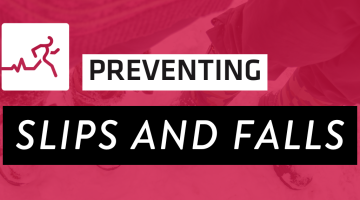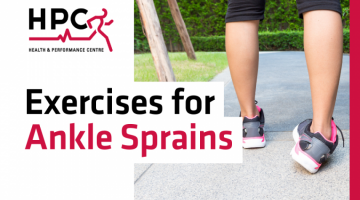Heel Spurs | Guelph Physiotherapy


Heel spurs are abnormal bone growths located on the bottom of the foot, typically in the plantar heel region of the calcaneus. They can be found on the underside of the heel where the plantar fascia connects to the heel bone.
What Causes Heel Spurs?
Heel Spurs are caused by chronic overuse and stress on the plantar fascia, the plantar fascia ligament, and surrounding foot muscles. This overuse causes inflammation on the heel.
Foot pain associated with this inflammation is more commonly found in older individuals due to changes in their step pattern that create a longer period for force to be applied to the plantar fascia as they step. Individuals who are overweight are at an increased risk of heel spurs as added pressure on the feet generates more stress on the plantar fascia ligament.
Younger, athletic individuals who participate in sports with high heel impact are also at greater risk for similar reasons.
Heel spurs are commonly associated with plantar fasciitis (PF), the inflammation of the plantar fascia at the bottom of the foot. While these growths do not cause the pain associated with plantar fasciitis, plantar fasciitis are at a greater risk of developing heel spurs.
Signs and Symptoms of Heel Spurs
While most individuals who have heel spurs experience foot pain in the heel area, some individuals may feel no pain at all (asymptomatic).
Symptoms may include:
-
Pain and tenderness on the bottom of the heel that gets progressively worse with time and use
-
Increased foot pain following activity
-
Increased foot pain following a long period of rest
How are Heel Spurs Diagnosed?
Clinical examination performed by a medical professional provides the basis for diagnosing heel spurs.
A practitioner will perform a physical examination of the foot involving palpation (touching) of certain regions. They will also use visual inspection at rest and while weight bearing during the gait cycle to check for swelling, bruising or heel pain. Range of motion (ROM) testing may be performed to evaluate movement of the joint. Additionally, a practitioner may request x-ray images of the foot or further diagnostic imaging to confirm the diagnosis.
Treatment for Heel Spurs
Within the first year of treatment, non-surgical options are utilized for heel spur pain. Relative rest from all activities which induce heel pain is initially recommended.
Physiotherapy helps to increase the range of motion of the joint through decreasing the tension within surrounding muscles and thus the plantar fascia ligament to reduce the stress at its origin on the heel. Our Guelph Physiotherapists provide individuals with exercises to stretch the calf and foot muscles to relieve associated pain. These exercises can be performed on their own and prior to activity.
An additional measure for active individuals who have pain associated with exercise is proper footwear. Individuals whose pain is associated with a particular pair of shoes are advised to stop using them. They may be instructed to insert an orthotic into the shoe to raise the heel to alleviate foot pain.
Cold and hot therapy may also be used to treat pain associated with heel spurs. Cold therapy is beneficial for inflammation of the plantar fascia ligament. Heat helps to relax stiff muscles and promotes blood flow to the affected tissues for healing.
After 12 months of conservative treatment, surgical excision of the heel spurs is likely required if no substantial progress has been made. This intervention poses the greatest risk of all treatment.
Tips and Tricks for Work from Home with Heel Spurs
-
If taking a break to go for a walk, individuals with heel spurs should ensure they dedicate a few extra minutes to warm up and stretch their feet and calf muscles prior to walking
-
Perform simple foot stretches at the desk throughout the day to help relieve muscle tension
-
Swap out any old shoes for newer, more supportive ones that will absorb excess force placed on the plantar fascia ligament origin
-
Take time to stay off your feet while at home as needed, and continue to follow any treatment plan already in place
If you and your physician have decided that you are a surgery candidate and you plan to undergo surgery, you should also plan your post-surgical rehabilitation process. Expect excellence in your physiotherapist.
References:
Agyekum, E. K., & Ma, K. (2015). Heel pain: A systematic review. Chinese Journal of Traumatology, 18(3), 164-169.
Kirkpatrick, J., Yassaie, O., & Mirjalili, S. A. (2017). The plantar calcaneal spur: a review of anatomy, histology, etiology and key associations. Journal of anatomy, 230(6), 743-751.
Plantar Fasciitis and Bone Spurs - OrthoInfo - AAOS. Orthoinfo.aaos.org. (2021). Retrieved 17 March 2021, from https://orthoinfo.aaos.org/en/diseases--conditions/plantar-fasciitisand-bone-spurs.
*About the HPC Student Volunteer Program*
Each year, approximately 30 University of Guelph students are selected following a competitive application process to take part in the “HPC Volunteer Program.” This program provides an opportunity for U of G student volunteers to translate their academic knowledge into practice, while gaining first-hand experience and mentorship from the team of certified physiotherapists and chiropractors at the University of Guelph’s Health and Performance Centre. As a result of this exceptional partnership between the University of Guelph and the HPC practitioners, students can gain valuable insight on evidence-based practice prior to graduating from their respective programs. Click here for more information on co-curricular experiential learning opportunities at the University of Guelph. This article was written by members of the 2021-22 HPC Student Volunteer Program.



